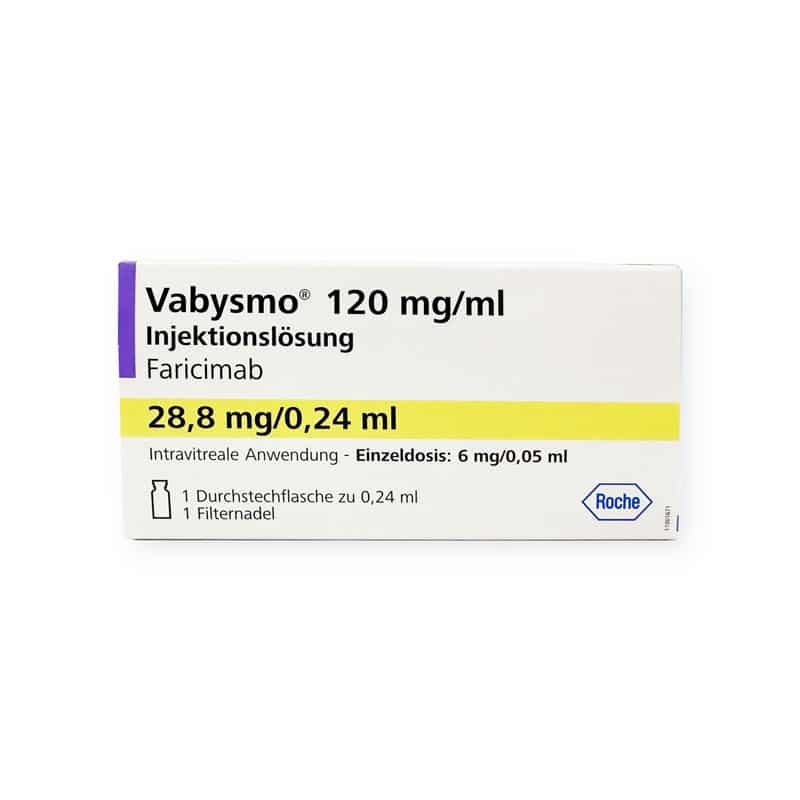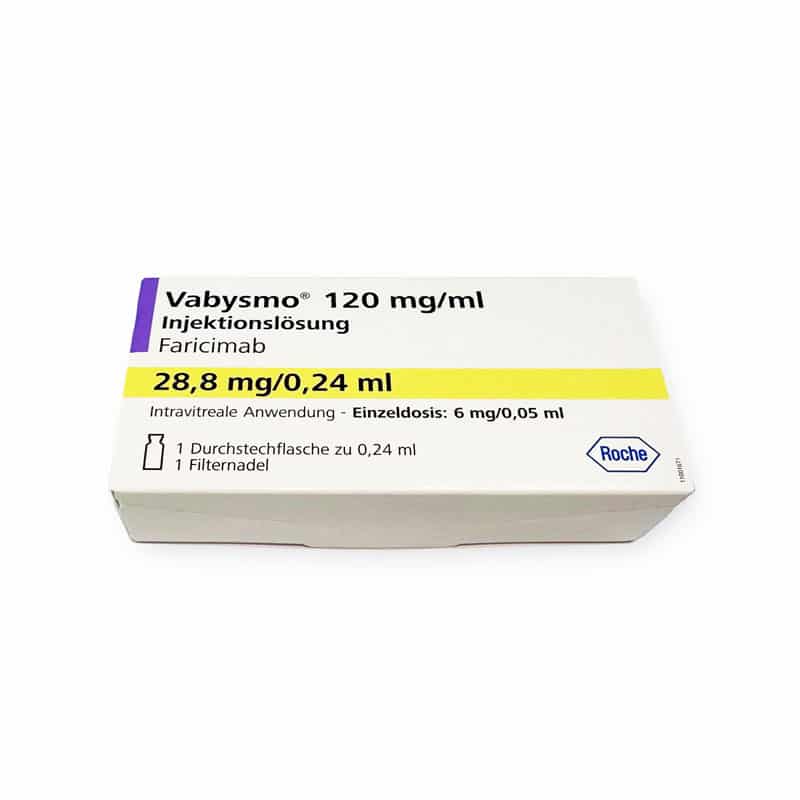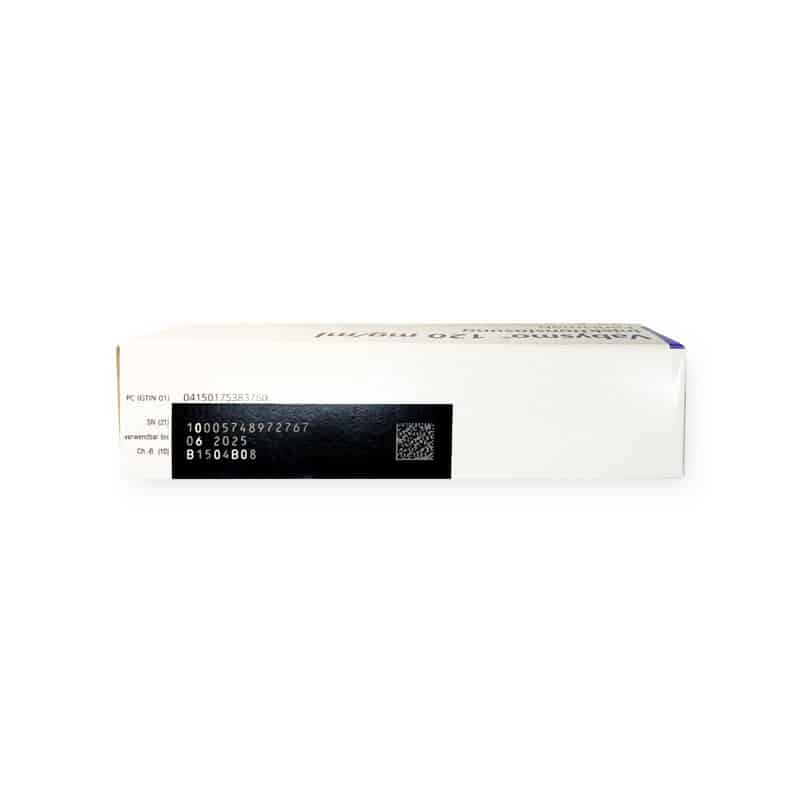Indications for Use
Vabysmo® (faricimab-svoa) is indicated for the treatment of neovascular (wet) age-related macular degeneration (AMD) and diabetic macular edema (DME). These are chronic eye conditions that cause vision loss, predominantly affecting older adults and individuals with diabetes.
- Neovascular AMD: Involves abnormal blood vessel growth in the macula, leading to leakage and vision impairment.
- Diabetic Macular Edema (DME): Swelling in the macula due to diabetes-related damage to blood vessels in the retina.
Dosage Information
The recommended dosage and administration for Vabysmo® vary depending on the condition being treated, but the typical administration route is via intravitreal injection directly into the eye. The dosing schedule is adjusted based on the patient’s response to the treatment.
- Neovascular AMD:
- Initial doses: 1 injection every 4 weeks for the first four doses.
- Maintenance doses: 1 injection every 8 to 16 weeks, depending on patient response.
- Diabetic Macular Edema (DME):
- Initial doses: 1 injection every 4 weeks for at least four doses.
- Maintenance doses: 1 injection every 8 to 16 weeks, depending on individual response to treatment.
The physician may adjust dosing intervals based on patient outcomes and the stability of the condition.
Side Effects and Precautions
Patients receiving Vabysmo® may experience several adverse effects, some of which may require medical attention. It is crucial to monitor for these effects and educate patients on recognizing early signs of complications.
- Common Side Effects:
- Conjunctival hemorrhage: Bloodshot eyes due to bleeding under the conjunctiva.
- Eye pain: Discomfort or pain following the injection.
- Vitreous floaters: Small specks or clouds moving in the visual field.
- Serious Side Effects:
- Retinal detachment: Separation of the retina from the back of the eye, leading to severe vision loss.
- Endophthalmitis: A severe eye infection that can occur post-injection, requiring immediate medical intervention.
- Increased intraocular pressure: A rise in eye pressure that could lead to glaucoma or other complications.
Precautions:
- Use with caution in patients with ocular or periocular infections.
- Avoid use in patients with known hypersensitivity to faricimab or any of the product’s components.
- Inform patients of the symptoms of retinal detachment or infection to ensure prompt medical evaluation.
Clinical Studies and Real-World Outcomes
The efficacy and safety of Vabysmo® were established through several clinical trials that evaluated its performance in treating both neovascular AMD and DME.
- Study Results for AMD:
- Significant improvement in vision was observed in patients, with 80% achieving visual stability after treatment.
- 45-50% of patients were able to extend their dosing intervals to 16 weeks without a reduction in efficacy.
- Study Results for DME:
- Vision improvement was noted in 74% of patients, with many experiencing a reduction in retinal swelling after the first few injections.
- Patients on a 16-week regimen showed similar outcomes to those on a 4-week regimen, indicating long-term benefits of extended dosing intervals.
Drug Interactions
While Vabysmo® is typically used in a controlled clinical setting, it is essential to understand its interactions with other drugs or treatments, particularly those administered for other ocular or systemic conditions.
- No significant drug interactions have been reported with systemic medications, including diabetes treatments commonly used by DME patients.
- Caution is advised when using Vabysmo® alongside other intravitreal therapies, as combining treatments could increase the risk of ocular complications.
Special Populations
Certain populations may require specific adjustments or considerations when receiving Vabysmo®.
- Pregnant and Nursing Women: Limited data is available on the use of Vabysmo® during pregnancy or breastfeeding. Animal studies suggest potential risks, and its use should only be considered if the benefits outweigh the risks.
- Pediatric Use: The safety and effectiveness of Vabysmo® in pediatric populations have not been established.
- Geriatric Use: No significant differences in treatment outcomes were observed between elderly and younger patients. Vabysmo® is considered safe and effective for older adults suffering from AMD or DME.
Warnings and Contraindications
Vabysmo® should not be used in the following circumstances:
- Ocular or periocular infections: Risk of worsening infections and associated complications.
- Hypersensitivity: Patients with known hypersensitivity to any components of the drug should avoid use.
- Pregnancy: The drug should be avoided during pregnancy unless the benefits clearly outweigh the potential risks, as animal studies suggest adverse effects on fetal development.



